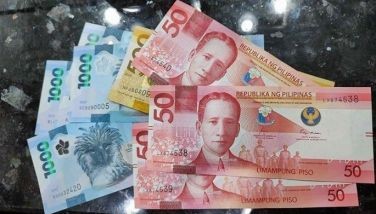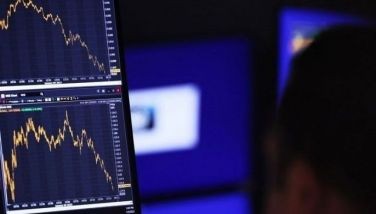Banks’ bad loans rise in February

MANILA, Philippines — The soured loans of Philippine banks picked up for the 14th straight month in February, bringing the gross non-performing loan (NPL) ratio to a steady 3.44 percent, amid high interest rates.
Latest data from the Bangko Sentral ng Pilipinas (BSP) showed bad loans rose by 13.4 percent to P466.1 billion in February from P411.2 billion in the same month last year. This is also 1.2 percent higher than the P460.8 billion logged in January.
Despite the rise in bad debts, the banking sector’s NPL ratio was unchanged from 3.44 percent in January.
This developed as banks’ total loan portfolio stood at P13.54 trillion in February, rising by 1.2 percent from a month ago and 9.1 percent from the previous year.
The NPL ratio matched the 3.44 percent in October last year and was the highest since the 3.46 percent seen in May 2023.
“The existing high interest rate and elevated inflation environment may have contributed to the rise of bad loans year-on-year,” UnionBank chief economist Ruben Carlo Asuncion said.
After raising interest rates from May 2022 to October 2023, the BSP kept the benchmark interest rate steady at 6.5 percent, the highest in nearly 17 years. The BSP was among the most aggressive central banks in the region, hiking a total of 450 basis points.
“The higher cost of borrowing does put pressure on existing loans and may expose newer loans to higher probability of default due to the prevailing interest rate conditions,” Asuncion said.
Based on BSP data, the banking sector’s past due loans rose by 16.4 percent year-on-year to P584.23 billion from P502.11 billion, while restructured loans declined by 8.9 percent to P292.08 billion from P320.54 billion.
Amid the increasing bad debts, the sector’s allowance for credit losses rose by eight percent to P466.4 billion from P431.5 billion a year ago. However, banks’ loan loss reserve level went down to 3.44 percent from 3.48 percent.
This translated to a NPL coverage ratio of 100.06 percent, slightly lower than the previous year’s 104.95 percent.
Soured loans are crucial indicators in assessing the health of the country’s financial system, referring to loans that are overdue for payment, usually more than 90 days, or are unlikely to be fully repaid.
Meanwhile, separate central bank data showed the total assets of banks operating in the country stood at P24.95 trillion as of end-February, 9.6 percent higher than a year ago.
The country’s biggest lenders are led by BDO Unibank followed by Metropolitan Bank & Trust Co., Bank of the Philippine Islands, China Banking Corp., Rizal Commercial Banking Corp., Philippine National Bank, Security Bank and Union Bank.
State-run Land Bank of the Philippines and Development Bank of the Philippines are also part of the country’s 10 largest lenders in terms of assets as of December 2023.
- Latest
- Trending




























